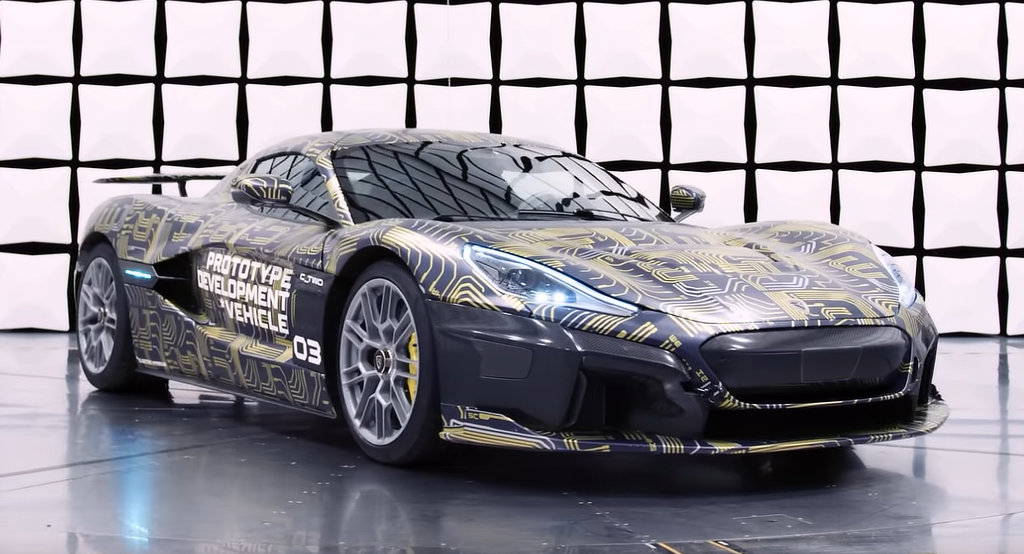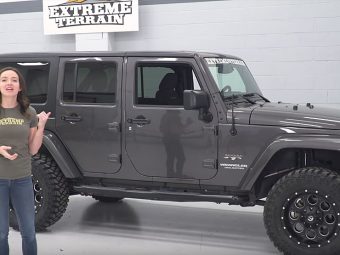The Rimac C Two testing (which is expected to cost $2m for each of the pre-sold 150 limited edition examples) is nearing the final stages of its multi-year global homologation program, meaning it can be sold all over the world, from the bitter cold of a Canadian winter to the scorching heat of a Middle Eastern summer. And to make sure it’s ready for every extreme it could face, engineers have put the C Two’s HVAC system to the ultimate weather test.
Using a Climatic chamber, capable of creating temperatures as high as 48C (118F) and as low as -28C (-4F), the Rimac C Two baked in high humidity 48C air, with sun lights beating down on it, until the cabin reached 70C (158F). Then the car’s compressors, pumps and fans were called into action, cooling the interior down to just 22C (72F) without overheating any components.
At the other end of the scale, the prototype vehicle was then left overnight in -28C (-4F) temperatures, with the doors wide open, creating a thin layer of ice all over the C Two. As fluids in the car become thicker at these sub-zero temperatures it becomes much harder for pumps to work, but all continued to work faultlessly and the car was defrosted well within global homologation targets.
Following this latest test, the pre-series prototype will go through final rounds of, durability tests, trim experimentation, NVH tweaking, and global product evaluation, before final production-specification cars are built later this year. The Rimac C Two testing phase is expected to continue for another few months more. The electric ultracar will be fully revealed in Q3 2021.
Rimac C TWO Technical Details:
- General: All-electric two-seat supercar
- Number of units: Limited to 150 units
- Homologation: Full global certification, including USA
- Performance
- Power: 1.408 kW / 1.914 hp
- Motor torque: 2.300 Nm
- Wheel torque 1st gear: 17.047 Nm
- Wheel torque 2nd gear: 8.227 Nm
- Acceleration 0-60 mph: 1,85 seconds
- Acceleration 0-100 km/h: 1,97 seconds
- Acceleration 0-300 km/h: 11,8 seconds
- 1/4 mile time: 9,1 seconds
- Top speed: 412 km/h / 258 mph
- Range: 650 km NEDC
- Chassis and structure
- Structure: Carbon-fibre monocoque with an integrated structural battery pack and bonded carbon fibre roof. Structural reinforcements and crumple-zones for the front, rear, and side-impact. Carbon-fibre rear subframe. Front and rear aluminum crash structures.
- Suspension: Double-A-arm wishbone suspension with electronically adjustable dampers and active ride-height.
- Front brakes: CCMR 390mm 6-piston
- Rear brakes: CCMR 390mm 6-piston
- Powertrain
- Powertrain: Four independent permanent-magnet electric motors, four-wheel drive with software-controlled torque vectoring.
- Rear gearboxes: Two independent two-speed gearboxes
- Front gearboxes: Two independent single-speed gearboxes
- Cooling: 7 independent cooling systems – all fans and pumps running on 48V
- Battery
- Capacity: 120 kWh
- Chemistry: Lithium Manganese Nickel
- Cell format: Cylindrical, 21700 form-factor
- Number of cells: 6960
- Maximum voltage: 720V
- Cooling: Liquid
- Fast charge: 250 kW DC Combo (<30 min 0-80% SoC)
- On-board charging: 3-phase 22 kW
- Aerodynamics
- Active elements: Front diffusers, rear diffusor, rear wing, bonnet turning vane, underbody inlets and outlets
- Cd in low-drag mode: 0,28
- Control: Central control system coordinating torque vectoring, active aerodynamics and suspension
- Safety
- Airbags: Driver airbag (Steering wheel)
- Passenger airbag
- Side airbag (lamella bag installed in the door at beltline)
- Seatbelt (complete system)
- Airbag control unit (ECU) and crash sensors
- Active safety: Collision risk prediction and Automatic Emergency Braking with evasive control (steering and motion planning) for collision avoidance
- Dynamic systems: Torque Vectoring with traction control and stability control, integrated with hydraulic ESP and ABS system.
- Structural: Pre-preg monocoque passenger cell with aluminum and carbon-fibre crash structures and deformation zones.
- ADAS
- 8x cameras (including front stereo vision)
- 1 or 2 Lidar
- 6x radars
- 12 ultrasonic
- Dimensions
- Length: 4750 mm
- Width: 1986 mm
- Height: 1208 mm
- Wheelbase: 2745 mm
- Weight: 1.950 kg








